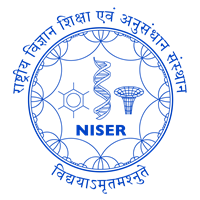

Associate Professor
arahamanniser.ac.in
+91-674-2494000 > 2077
Doctoral
2002 Indian Institute of Science, Bangalore (Biophysics and Biochemistry)
Post-doctoral
2003-2005 McGill University, Canada (Structural Biology)
2005-2009 University of Chicago, USA (Cell Biology)
Mar - July 2009 Cornell University, USA (Cell Biology)
Mechanism and regulation of membrane remodelling
Dey H and Rahaman A. (2021) A molecular determinant of membrane protein targeting. ASBMB Today. 20 (9):14-15. (Invited article)
Kar UP, Dey H, Rahaman A. (2021) Cardiolipin targets a dynamin-related protein to the nuclear membrane. eLife. 10:e64416 DOI: 10.7554/eLife.64416
Shukla S, Pillai AN and Rahaman A (2018) A Putative NEM1 Homolog Regulates Lipid Droplet Biogenesis via PAH1 in Tetrahymena thermophila. J. Biosci. 43:693-706.
Kar UP, Dey H, and Rahaman A (2018) Tetrahymena dynamin related protein 6 self assembles independent of membrane association. J. Biosci. 43:139-48
Pillai AN, Shukla S, Gautam S, and Rahaman A. (2017) Small phosphatidate phosphatase (TtPAH2) of Tetrahymena complements respiratory function and not membrane biogenesis function of yeast PAH1. J. Biosci. 42:613-621
Pillai AN, Shukla S, and Rahaman A. (2017) An evolutionarily conserved phosphatidate phosphatase maintains lipid droplet number and endoplasmic reticulum morphology but not nuclear morphology. Biol. Open 6:1629-1643
Kar UP, Dey H, and Rahaman A (2017) Regulation of dynamin family proteins by post-translational modifications. J. Biosci. 42:333-344
Rahaman, A., Miao, W. and Turkewitz, A.P. (2009) Independent transport and sorting of functionally distinct protein families in Tetrahymena dense core secretory granules. Eukaryot Cell 10:1575-83.
Rahaman, A., Elde, N.C. and Turkewitz, A.P. (2008) A dynamin-related protein required for nuclear remodeling in Tetrahymena. Current Biology 18:1227-33
Rahaman, A., Srinivasan, N., Shamala, N., and Shaila, M. S (2004). Phosphoprotein of rinderpest virus forms a tetramer through coiled coil region important for biological function: A structural insight. J Biol Chem, 279: 23606-14.
Rahaman, A., Srinivasan, N., Shamala, N., and Shaila, M. S. (2003) The fusion core complex of the peste des petits ruminants virus is a six-helix bundle assembly. Biochemistry, 42: 922-931.
Mechanism and Regulation of Nuclear Expansion:
Our group is addressing two major questions in nuclear expansion using Tetrahymena thermophila as a model organism.
1) Mechanism of nuclear expansion
The nucleus is a membrane-bound organelle that undergoes dramatic changes in size and shape during cell cycle progression. One such change is fragmentation of the nuclear envelope (NE) during mitosis. This fragmentation is a specific feature of metazoans. In yeast, for example, a "closed" mitosis without NE fragmentation requires nuclear membrane expansion to allow chromosome separation within a single intact nucleus. A more general change is the expansion of the NE in post-mitotic cells to accommodate chromatin de-condensation and DNA replication. Nuclear remodeling is a complex process requiring coordinated biosynthesis, targeting and interaction of the nuclear membrane with nuclear pores, inner nuclear membrane proteins and chromatin. How this is accomplished is not clearly understood in any system.
We use Tetrahymena thermophila as a model system to study nuclear remodeling. The unicellular, free-swimming ciliate undergoes closed mitosis, as does yeast. A striking advantage of Tetrahymena is that, nuclear envelope expansion in this organism occurs to a dramatic extent (~10-15 folds) during specific stages in cell conjugation; a process that can be highly synchronized in cell cultures. We have recently discovered that dynamin related protein 6 (Drp6) is required for nuclear remodeling in Tetrahymena. However, the mechanism by which Drp6 performs its function is not known. Therefore, one important objective is to understand the mechanism of Drp6 function in nuclear remodeling.
2) Cell cycle regulation of lipid homeostasis and membrane biogenesis
Nuclear expansion is a regulated process that occurs at a particular stage of cell cycle. A phosphatidic acid phosphatase (PAH1) regulates nuclear expansion in yeast by undergoing phosphorylation and dephosphorylation. While phosphorylated form of PAH1 is involved in nuclear expansion, its dephosphorylated form inhibits the process. The phosphorylation and dephosphorylation state of PAH1 is regulated by cell cycle related kinase (Cdk1) and phosphatase (Nem1 and Spo7 complex) respectively. We have established the role of large PAH1 homologue in lipid homeostasis and maintaining ER tubular structure in Tetrahymena and observed functional conservation with yeast homologue. However, the regulation of PAH1 is not known in Tetrahymena. We found three Nem1 homologues and would address their role in regulation of nuclear expansion, lipid homeostasis and ER structure. Since we did not find any homologue of SPO7 in Tetrahymena, we would also try to identify the protein performing the similar function in this organism.
Ph.D. Scholars:
Integrated M.Sc. students:
For an immediate post-doc position contact: arahaman@niser.ac.in
PGCS Convener- School of Biological Sciences